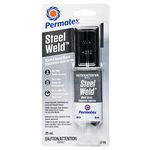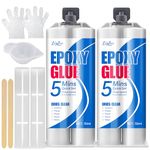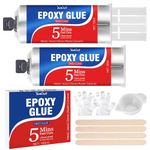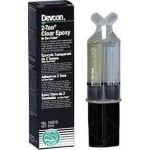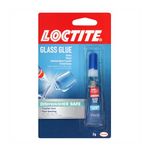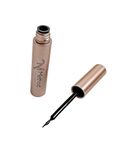10 bestEpoxy Gluesof January 2026
112M consumers helped this year.
1
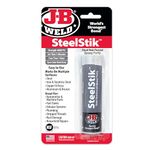
J-B Weld 8267 Steel Stick Steel Reinforced Epoxy Putty Stick - 2 Ounce
JB Weld

10.0
2

J-B Weld 8265S Cold Weld Steel Reinforced Epoxy with Hardener, 2 oz by J-B Weld
JB Weld

10.0
14% off
3
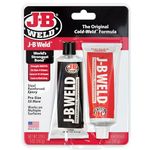
J-B Weld 8281 Original Professional Size Steel Reinforced Epoxy Twin Pack - 10 oz
JB Weld

9.9
4

JB Weld 50132CAN PlasticWeld Quick-Setting Epoxy Syringe - Dries Translucent Yellow - 25 ml
JB Weld

9.7
5
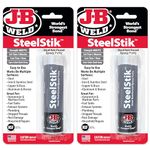
J-B Weld SteelStik, 1 Hour Cure, Steel Reinforced Epoxy Putty Stick - 2 Pack, Dark Grey (8267-2)
JB Weld

9.5
OtherUp to 11% off
6
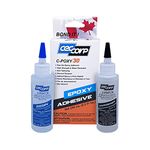
Epoxy Glue Adhesive C-POXY 30 by CECCORP (8.5 Oz Combined) – Medium Setting Cure, Clear Epoxy Glue, General Purpose, 30 Minute
CECCORP

9.3
7
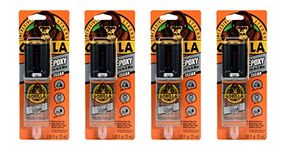
Gorilla 4200101-4 Epoxy (4 Pack), .85 oz, Clear
Gorilla

9.0
8
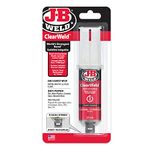
25 ML J-B CLEARWELD Quick-Set EPOXY Syringe
JB Weld

8.7
8% off
9

J-B Weld 8276 KWIK Weld Epoxy
JB Weld

8.5
10
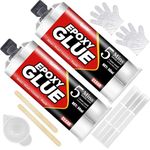
5 Minute Epoxy Glue 100ml, Multi-Purpose Clear Epoxy Adhesive for Metal, Plastic, Wood, Ceramics, Glass and More, Sturdy, Waterproof, Heat-Resistant, Fast Curing Liquid Epoxy Resin Kit
Vividye

8.2
A Guide to Selecting the Best Epoxy Glues
Choosing the right epoxy glue can make a big difference in how well your project turns out. Epoxy glues are strong adhesives that work on a variety of materials, including metal, wood, plastic, and ceramics. When picking an epoxy glue, it's important to think about what you are gluing, how quickly you need it to set, and the conditions the bond will face (like heat, moisture, or stress). Understanding the key specifications will help you select the best epoxy for your needs and ensure a strong, lasting bond.
Curing Time
Curing time refers to how long it takes for the epoxy glue to fully harden and reach its maximum strength. This is important because it affects how quickly you can use or move your project after gluing. Epoxies can be divided into quick-setting (usually 5-15 minutes), medium-setting (30-60 minutes), and slow-setting (several hours to overnight). If you need to finish your project quickly or want to make fast repairs, a quick-setting epoxy is best. For more complex assemblies where you need time to position parts, a slower-setting epoxy gives you more working time.
Strength
Strength describes how much force the cured epoxy can withstand before breaking. This is usually measured in pounds per square inch (PSI). Lower-strength epoxies (up to 1,000 PSI) are suitable for light repairs and crafts, while medium-strength (1,000-3,000 PSI) works for most household fixes. High-strength epoxies (over 3,000 PSI) are best for heavy-duty repairs or bonding materials that will bear weight or stress. Choose the strength based on how much load or force your glued joint will need to handle.
Mix Ratio
Mix ratio tells you how much of each part (resin and hardener) you need to combine for the epoxy to work properly. Some epoxies are pre-mixed, while others require you to mix equal parts or a specific ratio (like 2:1). Getting the mix ratio right is important for the glue to cure correctly and reach its full strength. If you want convenience and less chance of error, look for epoxies with a simple 1:1 mix or pre-mixed options. If you are comfortable measuring and want more control, you can use epoxies with more complex ratios.
Viscosity
Viscosity is a measure of how thick or runny the epoxy is. Low-viscosity epoxies are thin and flow easily, making them good for filling small cracks or bonding surfaces with tight fits. High-viscosity epoxies are thicker and better for vertical surfaces or filling larger gaps. If you need the glue to seep into small spaces, choose a low-viscosity epoxy. For overhead or gap-filling applications, a thicker, high-viscosity epoxy is more suitable.
Water and Chemical Resistance
Water and chemical resistance indicates how well the cured epoxy can withstand exposure to moisture, oils, solvents, or other chemicals. This is important if your project will be used outdoors, in the kitchen, or in industrial settings. Some epoxies are specially formulated to resist water and chemicals, while others are more basic. If your glued item will be exposed to harsh conditions, make sure to choose an epoxy with high resistance to water and chemicals.
Color and Clarity
Color and clarity refer to the appearance of the cured epoxy. Some epoxies dry clear, while others may be yellowish, gray, or opaque. This matters if the glue line will be visible or if you want a neat finish. For invisible repairs or crafts, a clear-drying epoxy is best. If appearance is not important, you can use any color.
Best Reviews Guide Newsletter
Get exclusive articles, recommendations, shopping tips, and sales alerts
Sign up for our newsletter to receive weekly recommendations about seasonal and trendy products
Thank you for subscribing!
By submitting your email address you agree to our Terms and Conditions and Privacy Policy
